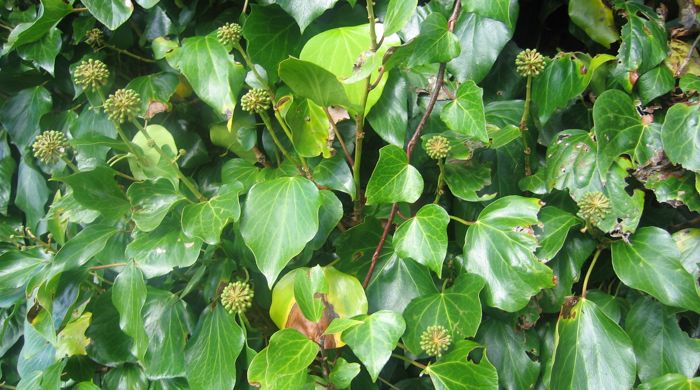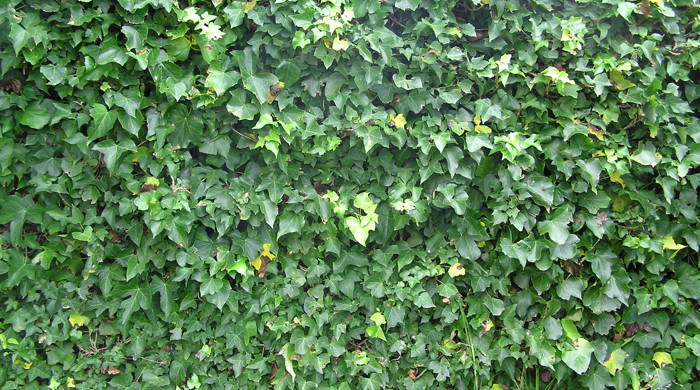Hedera helix subsp. helix
English ivy
Family: Araliaceae
Origin: Eurasia, North Africa

Regional Pest Management Plan (RPMP) status
- Whole region — Sustained control
- Hauraki Gulf Controlled Area Notice pest
- Parkland with Significant Ecological Areas — Site-led (on-park and buffer)
General description
Evergreen, perennial, root-climbing liana. Stems are woody when mature. Leaves are usually palmate with three to five lobes, < 20 x 3 cm, and differ between juvenile and adult foliage. Flowers are yellow/green and borne in spherical umbels in August – December. Berries are deep purple/black and borne in March-May.
What you need to know
To help protect our environment:
- You must not breed, distribute, release or sell English ivy within the Auckland region.
- You must not plant English ivy within the Auckland region, unless you are transferring an existing plant on your land to another location within the boundaries of the same property.
- You must destroy any English ivy on land that you occupy if it has been planted in breach of the above rules and you are directed to do so by an authorised person.
Auckland Council will manage English ivy in buffer areas of parks, where English ivy is being managed, to an extent that protects the values of that parkland. If you wish to help protect your local parkland, you are encouraged to control or remove any English ivy on your land and plant a better alternative instead.
View a map of park buffers.
To find out more about how we’re protecting Auckland’s parkland from pest plants, visit our pest plant buffer pages.
Habitats
Roadsides, riparian areas, cliffs, forest.
Dispersal
Seeds dispersed by birds. Vegetative spread from stem fragments. Human-mediated dispersal through dumping of garden waste and deliberate plantings.
Impact on environment
Forms dense mats, preventing regeneration of other vegetation. Potential to alter decomposition dynamics and nutrient cycling. Can cause contact dermatitis.
Control
Site Management
Follow up treated areas 3 times per year. Encourage natural regeneration of native plants or replant treated areas where possible after 2-3 treatments to establish dense ground cover and minimise reinvasion.
Recommended approaches
Physical control
Method: Dig out.
Plant parts requiring disposal: All parts.
Disposal options: Compost stems and roots in a composting weed bag or remove to greenwaste or landfill.
Biocontrol
Biocontrol is currently not available for this species.
Community agrichemical control recommendations
No qualifications: Cut stump and paste freshly cut base of stems with metsulfuron gel.
Basic Growsafe certified: Cut stump and spray freshly cut base with 2g metsulfuron-methyl per 1 L of water.
Certified Handler/Experienced agrichemical user: Foliar spray with 5g metsulfuron-methyl per 10L of water and 20ml penetrant.
Caution: When using any herbicide or pesticide please read the label thoroughly to ensure that all instructions and safety requirements are followed.






